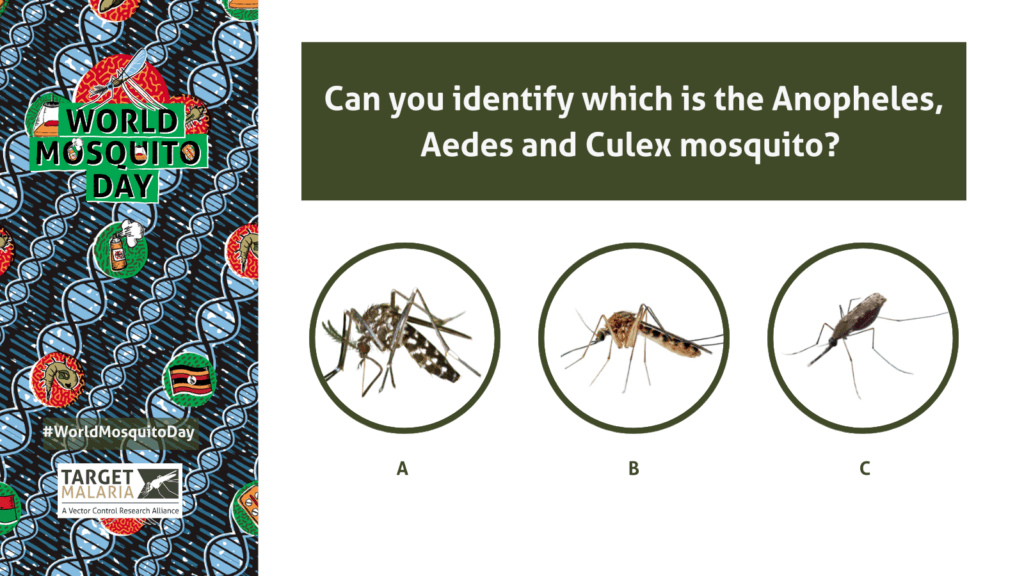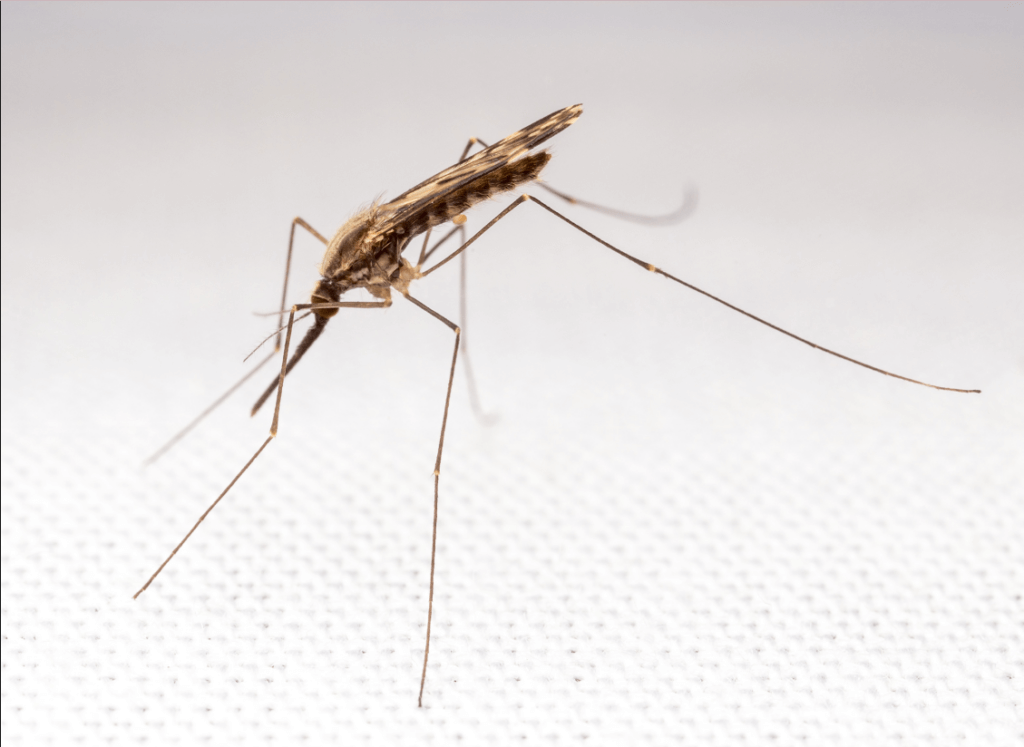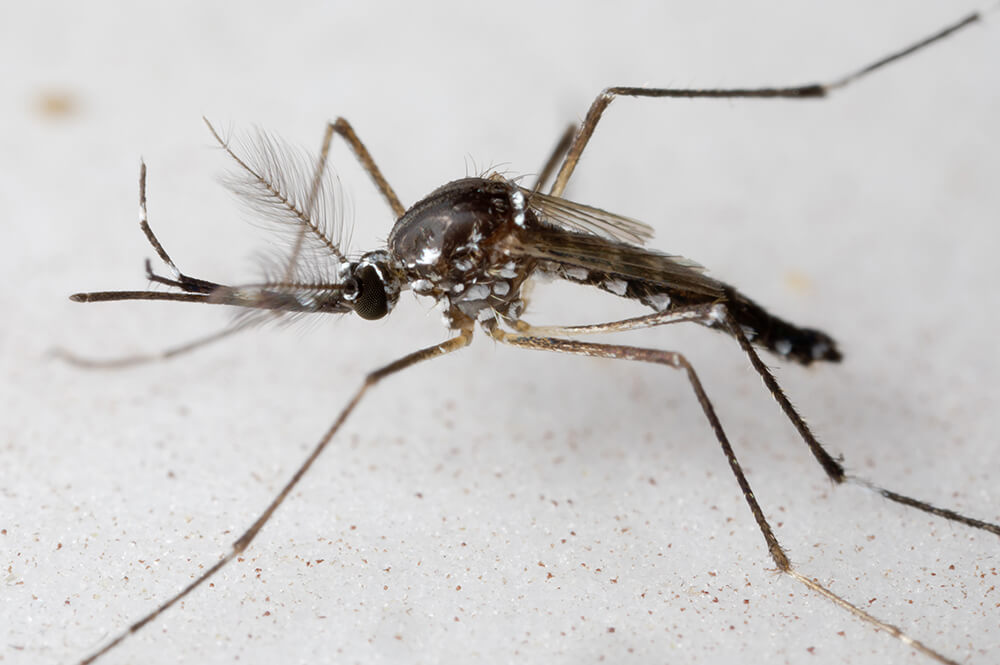Anopheles, Aedes or Culex: how to tell mosquito species apart?

Worldwide there are more than 3,500 species of mosquitoes, with 837 of those species in Africa, 100 in Europe and 170 in North America. Yet, from this great diversity, only a small handful of them can carry pathogens that cause disease. It is also important to note that these different species cannot mate with each other.
Malaria is spread by the bite of female Anopheles mosquitoes. More than 500 Anopheles species have been described worldwide, and more than 30 are considered a public health problem. Amongst these, 3 very closely related species are responsible for most malaria transmission: Anopheles gambiae , Anopheles coluzzii and Anopheles arabiensis .
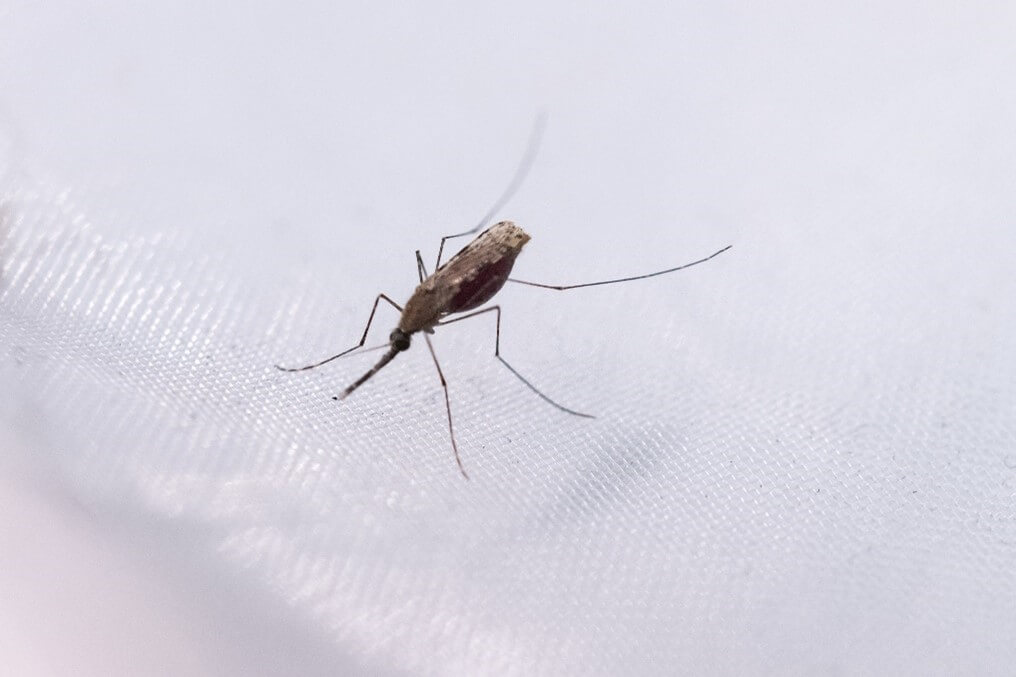
Anopheles Mosquito via Target Malaria
Anopheles mosquitoes are generally attracted to dark, sheltered areas for resting during the daytime.
The female Anopheles mosquito must feed on blood in order to get the necessary nutrients to grow their eggs; they tend to be nocturnal biters, usually biting late in the evening or at night. They lays eggs on stagnant water, this can occur in natural habitats or man-made water sources such as buckets and plant pots.
In terms of appearance, Anopheles mosquitoes can be distinguished from other mosquitoes by their palps (sensory organ near the mouthpart), which are as long as the proboscis. Adult Anopheles can also be identified by their typical resting position: males and females rest with their abdomens sticking up in the air rather than parallel to the surface on which they are resting, as shown in the image below.
There are many other species which transmits different diseases such as Aedes aegypti, Aedes albopictus and Culex pipiens, to name a few. Mosquitoes can be easily misidentified due to their small size, but they are very distinguishable from each other when studied closely due to their appearance, their behaviours and the regions they live in. Although they are insects and belong the mosquito family, one species can be millions of years separated from another from an evolutionary point of view.
Aedes aegypti and Aedes albopictus are responsible for the transmission of dengue, zika, yellow fever and chikungunya. While the species originated in Africa, it can now be found in most tropical and subtropical climates, such as Southeast Asia, parts of America, the Pacific Islands and Australia. One distinction between the species is that Aedes albopictus can also live a broader temperature range and at cooler temperatures than Aedes aegypti. These mosquitoes both generally live in or near homes or in neighbouring woods, preferring to live outdoors. They are common in urban areas.
The Aedes mosquito is a daytime biter. Its peak feeding times are during the early morning and late afternoon. Female Aedes mosquito lay their eggs in stagnant water.
In terms of appearance, Aedes mosquito show a black and white pattern due to the presence of white/silver scale patches against a black background on the legs and other parts of the body.
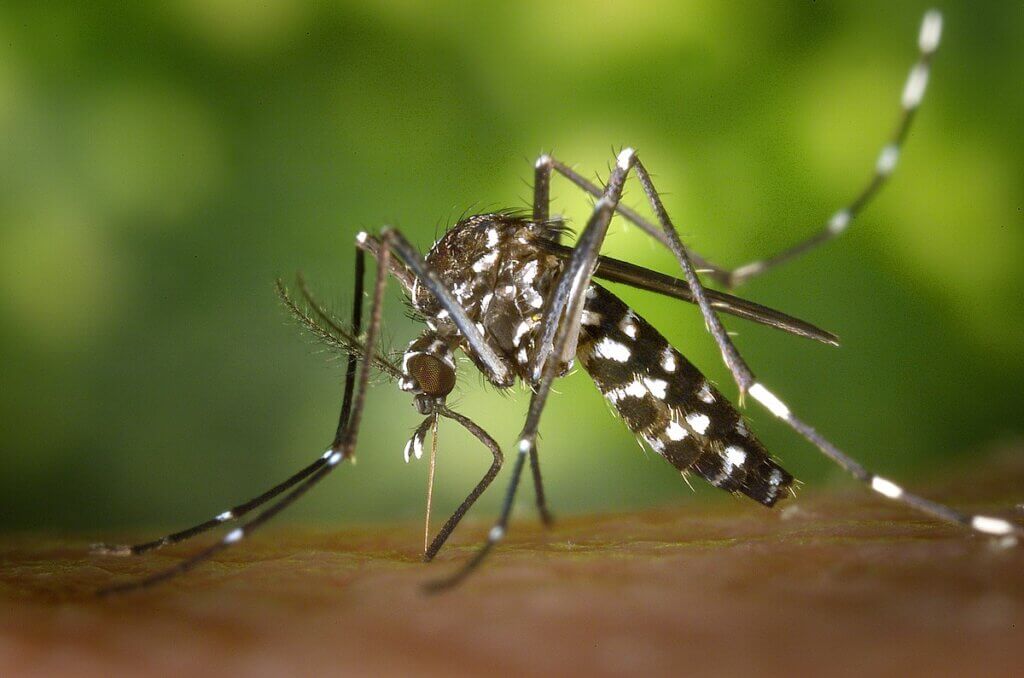
Aedes mosquito via Wikipedia
Culex pipiens mosquitoes, sometimes called “house mosquitoes”, are responsible for the transmission of Japanese Encephalitis virus, West Nile virus, Usutu virus and a few other viruses in Europe. The species is present in Africa, Asia and Europe. It lives in temperate regions and favours outdoor environments near homes.
The Culex mosquito is a nighttime biter, preferring to feed between dusk and dawn, and the female Culex mosquito lays her eggs on the surface of fresh or stagnant water.
In terms of appearance, the Culex pipiens mosquito is a medium-size mosquito (4-10 mm), brownish-coloured overall, without any obvious specific pattern.
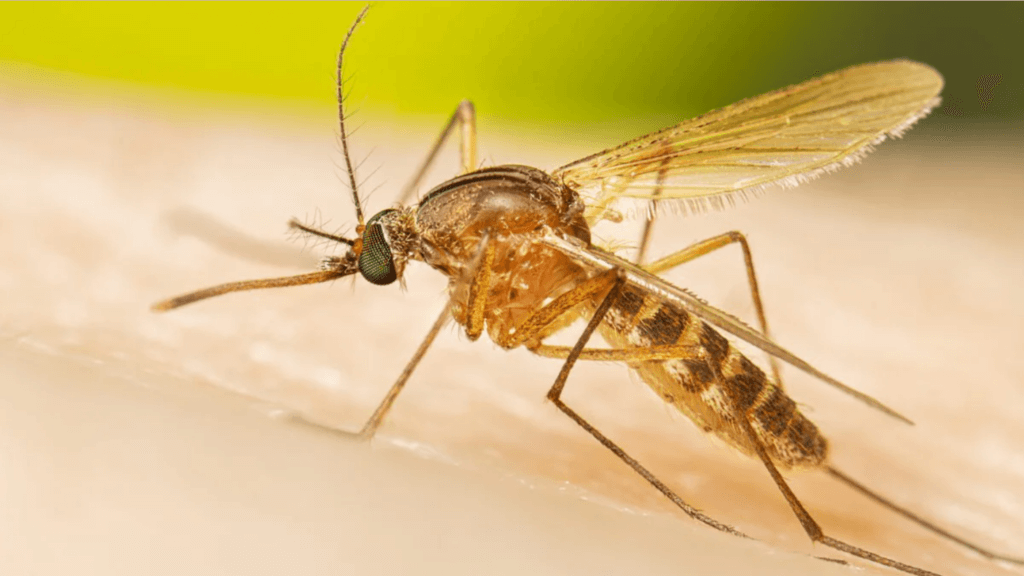
Culex mosquito via CDC
Now that you know a little more about these species, can you tell the differences below?
